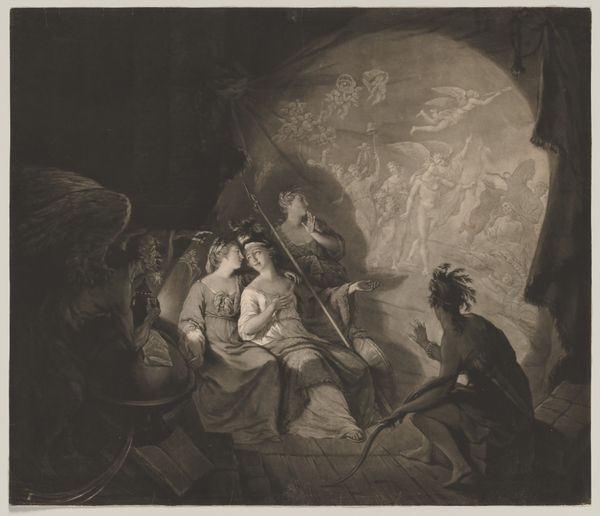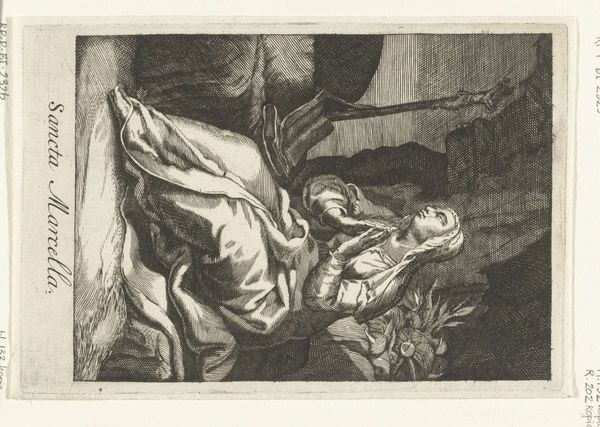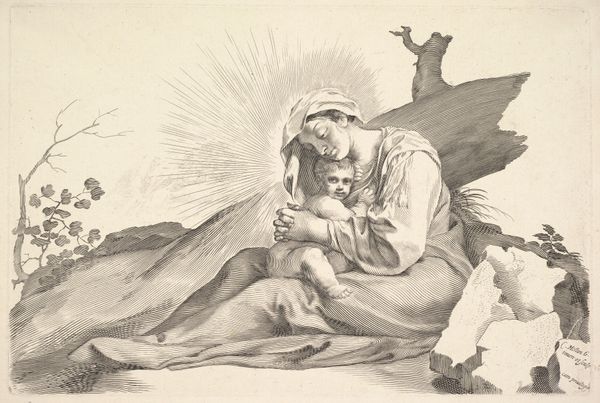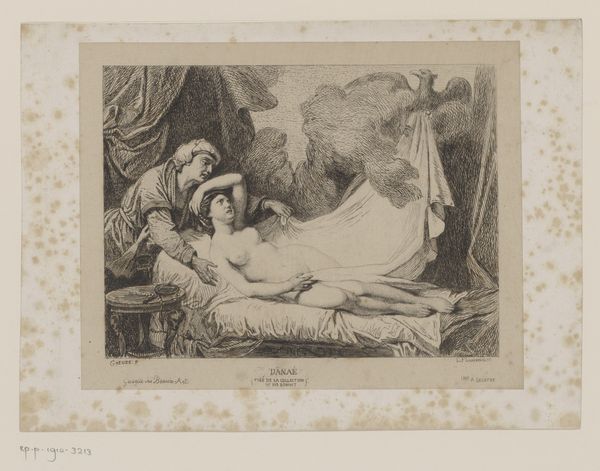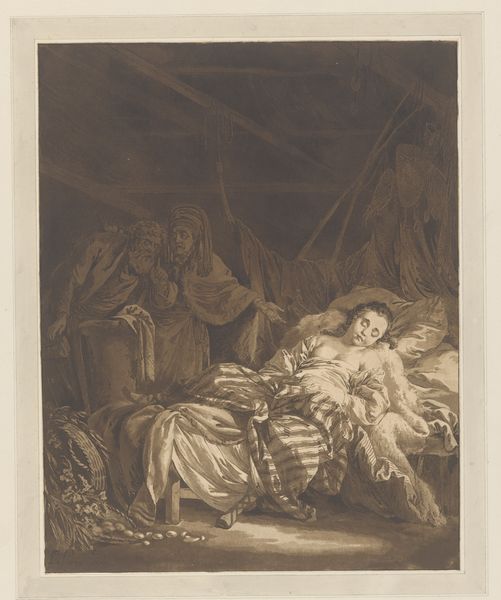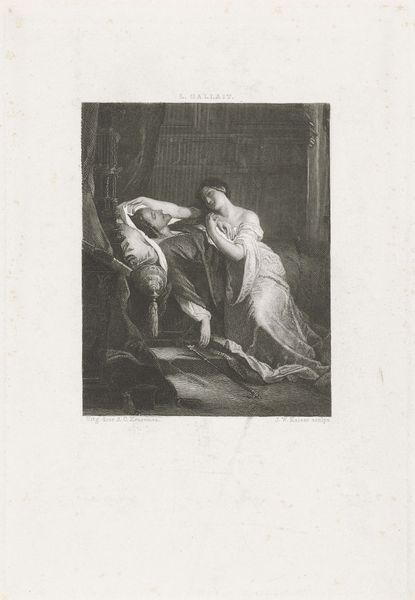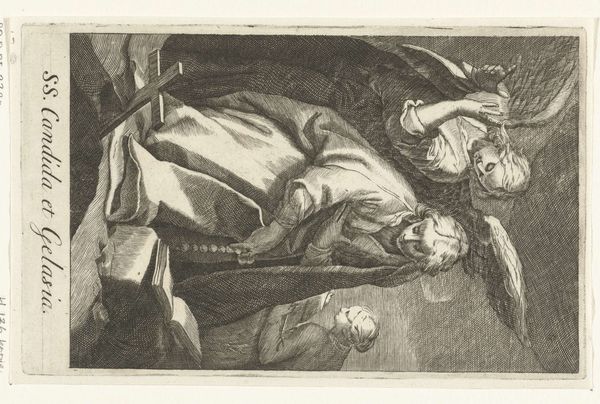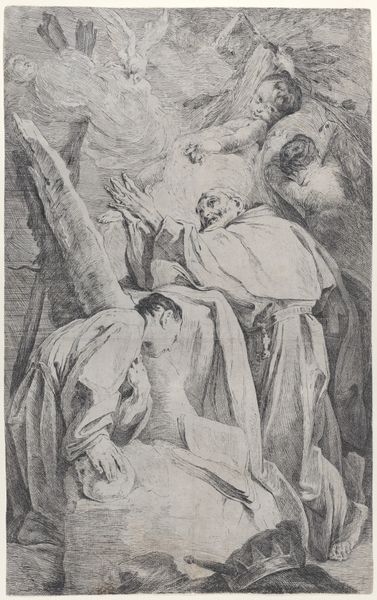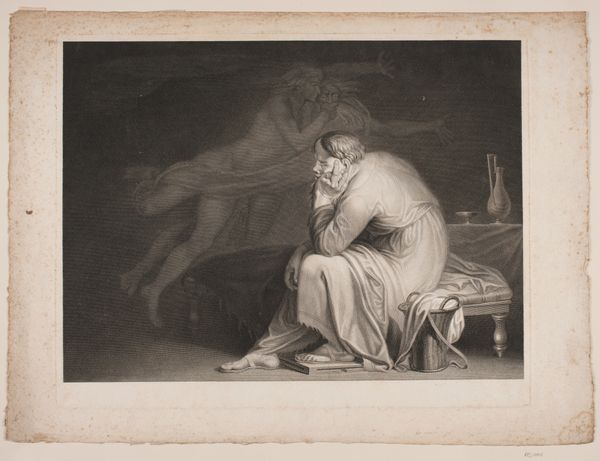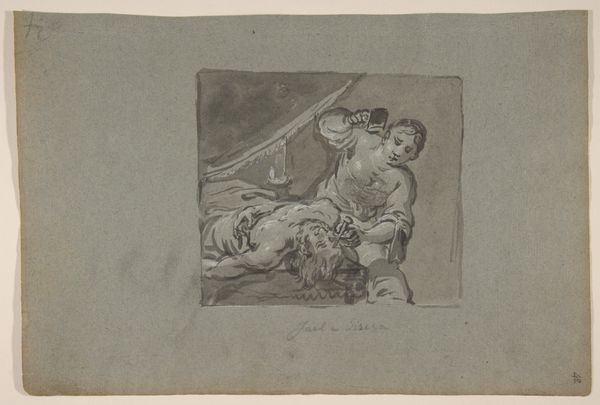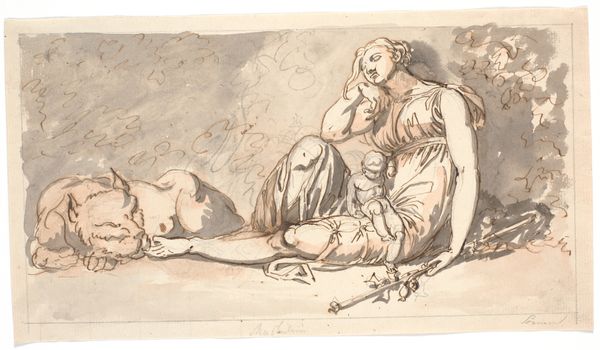
La charité romain (Roman Charity), in an album containing Recueil de Compositions par Lagrenée Le Jeune (Collection of Compositions by Lagrenée the Younger) 1782 - 1821
0:00
0:00
drawing, print
#
pencil drawn
#
drawing
#
toned paper
#
light pencil work
# print
#
pencil sketch
#
charcoal drawing
#
charcoal art
#
pencil drawing
#
france
#
men
#
watercolour illustration
#
pencil art
#
watercolor
Dimensions: Sheet: 15 7/8 × 21 9/16 in. (40.4 × 54.7 cm) Plate: 4 3/4 × 7 in. (12 × 17.8 cm)
Copyright: Public Domain
Editor: So, this print is called *Roman Charity* by Jean Jacques Lagrenée the Younger, dating from 1782-1821. It seems to be a print made with pencil on toned paper. I'm really struck by the dramatic chiaroscuro and the figures' intertwined bodies, but I'm not sure I fully grasp the narrative. What can you tell me about this artwork? Curator: From a materialist perspective, the medium itself, printmaking, is key. The reproductive nature of prints makes this story, a rather lurid classical tale, accessible to a wider audience. It democratizes high art. Editor: How does the material relate to the subject? Curator: Consider the story itself: Roman Charity depicts a woman, Pero, secretly breastfeeding her imprisoned and starving father, Cimon, who was condemned to death. How does the printmaking process relate to this act of nourishment and sustenance? Consider the materials used – pencil and toned paper. It's not paint, not sculpture, but something easily reproducible, distributed. Is Lagrenée commenting on social structures, class, and access through the very act of making this a print? Editor: I guess so, the fact that the message gets duplicated so many times allows more and more people to witness the same act of charity and become participants of a wider message. It challenges the traditional boundaries we might place on familial duties based on socioeconomic levels... I hadn’t thought about it that way. Curator: Exactly! And look closer. This isn't just about an act of charity; it's about subverting authority. Cimon is a prisoner, and Pero defies her father's captors and, in doing so, challenges the social order. Consider the labor involved in creating this print – the artist's, the printer's, the distributors' – and how that mirrors Pero's labor of love and defiance. The print itself becomes an act of rebellion against artistic conventions. Editor: That's fascinating. I'm starting to see how the printmaking process itself can be a powerful commentary on social issues and challenge the consumption of the image, rather than a mere depiction of a historical narrative. Curator: Precisely! By examining the materials and means of production, we move beyond a simple interpretation of the narrative and delve into a critical analysis of power, labor, and social structures.
Comments
No comments
Be the first to comment and join the conversation on the ultimate creative platform.
